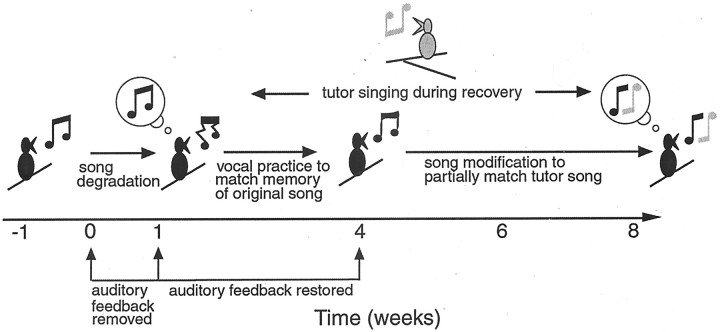Fig. 10.
A working model showing the proposed sequence of changes in song, changes in auditory feedback, and effects of exposure to another singing bird over the course of hair cell loss and regeneration. The model begins with a bird (black) singing stable song. That bird is treated to cause hearing loss for 1 week, and song is degraded by the end of that week, indicated by thecrooked musical note. Our findings suggest that the bird stores a memory of its original song, indicated by the musical note in the bubble. As auditory feedback is restored during hair cell regeneration, the bird goes through a period of sensorimotor integration in which vocal output matches the song memory more closely over time such that the recovering song matches well with the original song by 4 weeks after the end of treatment. This is indicated by the musical notethat is similar but not identical to the original note. If a tutor bird (gray) is singing during the recovery of the treated bird (black), the recovering bird's song may be modified to partially match the tutor's song once auditory feedback is maximally restored. This is indicated by the combination of parts of the original musical note (black) and the tutor's note (gray) in the bubble and to theright of the recovered bird at 8 weeks of recovery.

